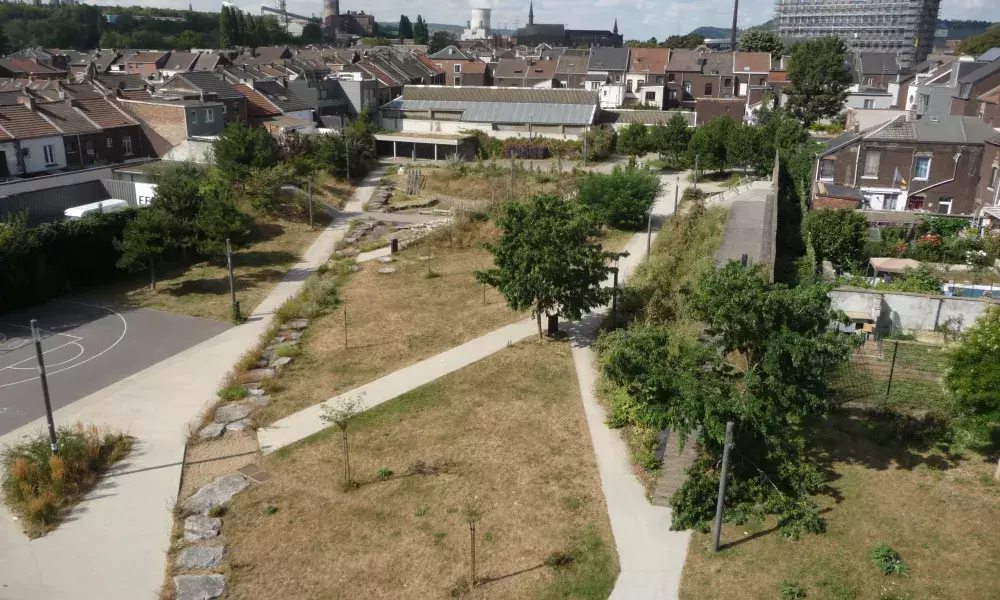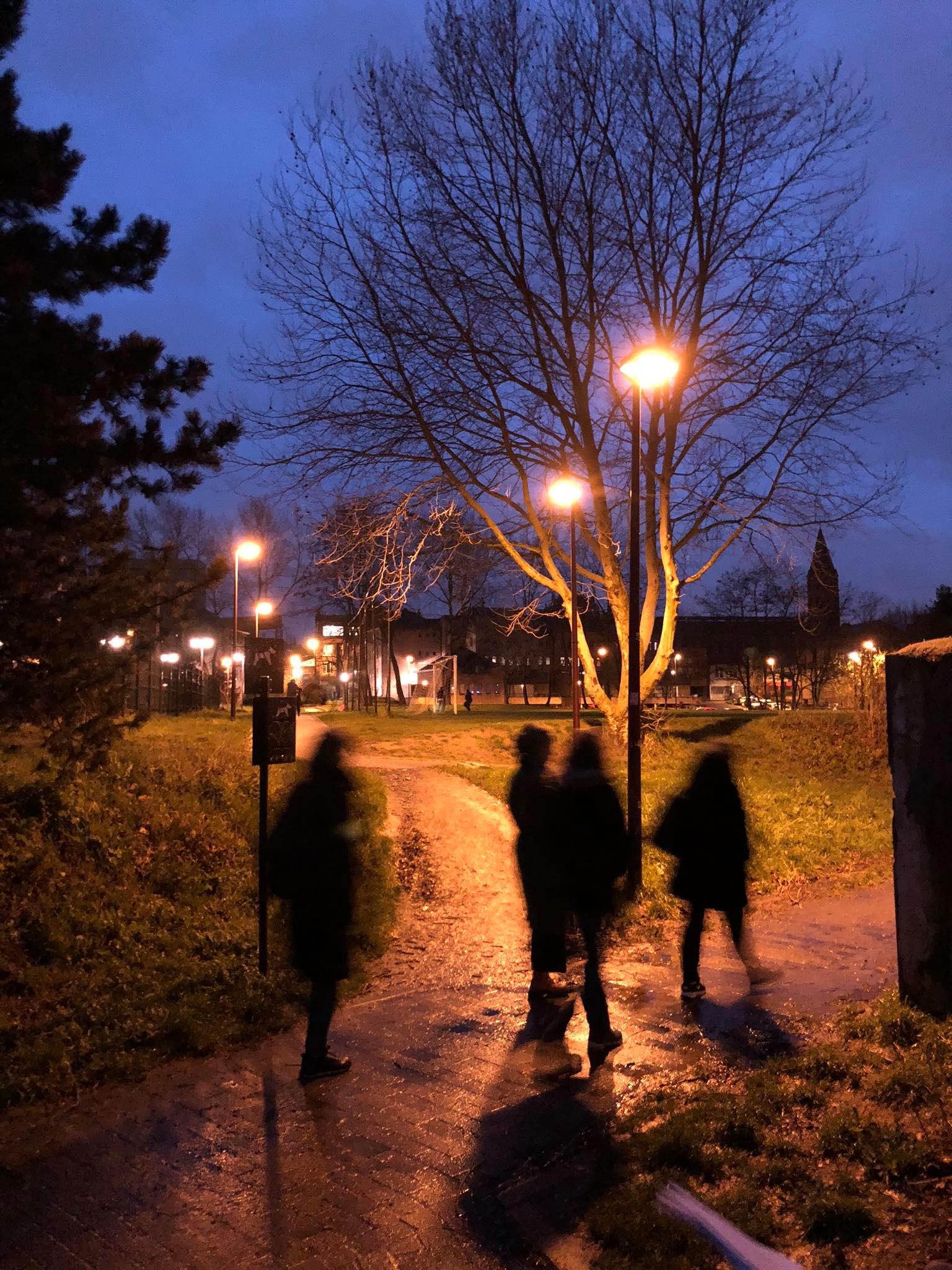Go transdisciplinary and flexible! The A Place To Be-Come way to learning

How can we improve the quality of life of citizens living in a deprived neighbourhood? How can we improve the relation between citizens and the public spaces – in particular green areas – of their neighbourhood? How can we improve, at the same time, the relation of citizens with each other?
In Seraing they are trying to answer these questions through a mix of integrated actions that have one broader common goal: building urban commons to fight against social and spatial exclusion. Actions include nature-based trainings devoted to residents and local officials and aimed at improving local expertise on green spaces management and care as well as providing new job opportunities to residents experiencing precariousness; collective activities conceived to raise awareness about the importance of taking care of public spaces and promote a positive attitude towards urban commons; a participatory approach designed to build a network of spaces where citizens can meet, exchange and together create new projects.
The project’s methodological approach puts a particular emphasis on inquiry and knowledge production as key to the implementation process, thus welcoming the possibility for adaptation and adjustment as a part of the process itself. And it does so through an effort to integrate knowledge across disciplines and stakeholders, thus trying to put academics, practitioners and citizens into dialogue.
The role and the importance to adopt a transdisciplinary approach when social innovation is sought, is agreed upon in planning literature. But why is transdisciplinarity so critical to satisfy social needs and bring about transformation all together?
First of all, transdisciplinarity refers to a strategy that promotes a strong intermingling of academic and non-academic worlds that join together to produce shared analysis and implement shared solutions. In terms of effectiveness of expected outcomes, this approach may assure more socially robust assumptions and more fitting solutions.
Partnerships as instrument of innovation and empowerment have been encouraged by the Eu through various programmes for many years by now[1] and the participation of every societal actor along the process is seen as essential to change. Transdisciplinarity is taking the challenge a step further. It puts the accent not only on the involvement of different stakeholders, but also on the continuum of the process of knowledge creation, which path leads relentlessly to mutual learning and eventually transformation. This path needs to be built through research and action, as two different but equally crucial moments of collective learning.
In this perspective, knowledge produces transformation which in turn produce more knowledge. Such a circular process of collective knowledge production should be able to forge a joint problematization of the field of study which helps to better understand social issues, identify a shared view of the common good, and build a stronger connection between what happens in the field and abstract reasoning. Collective learning, as the result of this process, is paramount for enabling transformation on the basis of a common agenda which all the actors have agreed upon.
This process does not come without challenges, for stakeholders can be very diverse and find it difficult to share goals, working methods and values, to cross their traditional and confortable boundaries. Collective learning needs continuous negotiation, eagerness to experiment and a common will to redefine the research setting at each step of the process.
[1] See for examples the Guide to Social Innovation at https://ec.europa.eu/eip/ageing/library/guide-social-innovation_en
Four on eight partners of the project are differently involved in the phase of inquiry with complementary and integrated roles which suppose the capacity and willingness to share knowledge, collaborate and, eventually, adjust according to difficulties that may arise. This approach is proving helpful in these exceptional times that require the ability to relentlessly adapt our own actions.
Two partners working on the inquiry come from the academic world, one is from the private sector and another one from the public sector:
- The Urban and Environmental Engineering research unit of the University of Liège, division of Architecture and Urbanism (LEMA): https://www.uee.uliege.be/cms/c_4518224/en/lema;
- The Psychology and Neuroscience of Cognition (PsyNCog) research unit of the University of Liège, division social psychology: https://www.psyncog.uliege.be/cms/c_5016065/fr/psyncog-a-propos;
- The French private consultancy Psykolab specialist in service design through a social psychology approach: https://www.psykolab.fr/psykolab/;
- The Public Centre for Social Action (CPAS), the main local institution providing social aid to citizens in needs: https://www.seraing.be/cpas-et-affaires-sociales/.
The overall objective of the inquiry is to gain a better understanding of how Seresian citizens use and relate with the central neighbourhood’s public spaces, in particular public parks within the project’s area.

The methodology includes different approaches which are all based on the hypothesis that a positive relationship with green areas is a source of well-being and enhances the quality of life of those who can take advantage of it. PsyNCog makes use of quantitative methods; LEMA and Psykolab adopt a qualitative approach that includes different methodologies of inquiry. While every partner designs and conducts its own inquiry, they have been able to find a collective form of cooperation which assures mutual learning and progress.
In autumn 2019 PsyNCog designed and tested a questionnaire to investigate how residents and users in the central district of Seraing perceive and enjoy existing parks. In February and March 2020, just before Belgium imposed severe restrictions to social activities in response to the covid-19 epidemic, PsyNCog research group went to the field to distribute the questionnaire and collect information through door-to-door in project area, a weekly presence at the local market on Fridays, and meetings with local associations that provided connections with residents. Then, in order to pursue the data collection despite the new obstacles, PsyNCog designed a online version of the questionnaire and disseminated it between April and June 2020 via social networks, local associations’ mails and the city website. The Public Centre for Social Action (CPAS), the partner that facilitates the encounter between social beneficiaries and the project’s team, came also into play by distributing shorter versions of the questionnaire through its social workers.
The survey aimed to inquiry about how people perceive and how often they hang out at the central district and its three green spaces, parc Morchamps, parc des Marêts et parc Bernard Serin. To this end, it included questions about people’s attachment to places, their level of appreciation, their feelings towards them and their perception of security. Overall, the survey was administered to 241 people and in the end 231 questionnaires were considered correctly completed and used for analysis.
The results of the survey have already been scrutinised by the PsyNCog research unit, but discussions and interdisciplinary moments of exchange are still ongoing within the project team, to allow crosscutting review and prepare for the next steps, which will build on the analysis of social needs to involve citizens in the improvement of their environment.
In this respect, PsyNCog, LEMA and Psykolab have been working closely together.
LEMA’s research team conducted two main activities: on the one side, they completed a preliminary urban analysis of the city of Seraing by reviewing planning documents, geographical data and the evolution of the territory while crossing them with socio-economic and demographic variables, to explore and map the relevance for the project of its socio-economic characteristics, urban functions, the geographical localisation of green areas and public spaces, its industrial heritage, urban mobility. On the other side, they carried out 4 exploratory walks and 4 participatory workshops involving about 70 citizens with the help of local grassroots organisations, to discuss feelings, perceptions and sense of belonging in relation to public spaces, and especially green spots, in the project area:
- Two groups of women (from Seraing and from outside);
- A group of students from a local primary school;
- Two groups from local grassroots organisations.


The exploratory walks and participatory workshops were designed and managed by LEMA as the first stage of the implementation of a participative process understood as key to encourage citizens’ engagement. Besides this, they have also contributed to enrich and complement the qualitative analysis carried out by Psykolab. In fact, Psykolab studied the information collected by LEMA during the exploratory walks through a psychosocial lens and returned it back to the overall analysis with an added value.
Moreover, the qualitative component of the inquiry was integrated by interviews and observation. Psykolab interviewed 25 people, ranging from social and health professionals working in the area, grassroots organisations and residents being trained in green areas maintenance within the project.
Several site visits to the three main parks and their surroundings were also expected to take place during the spring, but then the lockdown cancelled every plan. Eventually, this problem turned out to be an opportunity for the team. In replacement of Psykolab, which is based in Lyon (France) and could not move to Belgium, the CPAS assumed the role of the observer and carried out field observation under the supervision of the French partner. The CPAS observed the layout of spaces (parks and accesses), socio-spatial interactions and spatial practices in different days and at different times of the day and then recorded every detail in an observation grid previously elaborated by Psykolab. As Aura Hernandez from Psykolab acknowledges,
“Eventually, it has been really appropriate to have someone so familiar with the field who could conduct field observation”
Today the main challenge the whole team faces is how to mobilise citizens further so that it can pursue the project’s goals of empowerment and inclusiveness. The pandemic has hit hard in Europe and in Belgium the national and regional governments have adopted severe measures to tackle the sanitary situation. In these conditions, participatory activities aimed to involve citizens are hard to put in place, especially in disadvantaged neighbourhoods.
An approach which favours continuous reflection and adjustment might be the better answer to find unusual and creative solutions to new emergent problems.
- Bureau of European Policy Advisers (2011). Empowering People, Driving Change: Social Innovation in the European Union. European Commission
- De Blust S, Devisch O and Schreurs J (2019). Towards a situational understanding of collective learning: a reflexive framework. Urban Planning 4, 1: 19-30
- Moulaert F, MacCallum D, Mehmood A and Hamdouch A (2013). The International Handbook on Social Innovation. Collective Action, Social Learning and Transdisciplinary Research. Cheltenham, UK: Edward Elgar Publishing Limited
- Moulaert F, Mehmood A, MacCallum D and Leubolt B (2017). Social Innovation as a Trigger for Transformations: the role of research. European Commission, Directorate-General for Research and Innovation https://ec.europa.eu/research/social-sciences/pdf/policy_reviews/social_innovation_trigger_for_transformations.pdf
About this resource
The Urban Innovative Actions (UIA) is a European Union initiative that provided funding to urban areas across Europe to test new and unproven solutions to urban challenges. The initiative had a total ERDF budget of €372 million for 2014-2020.
Similar content




